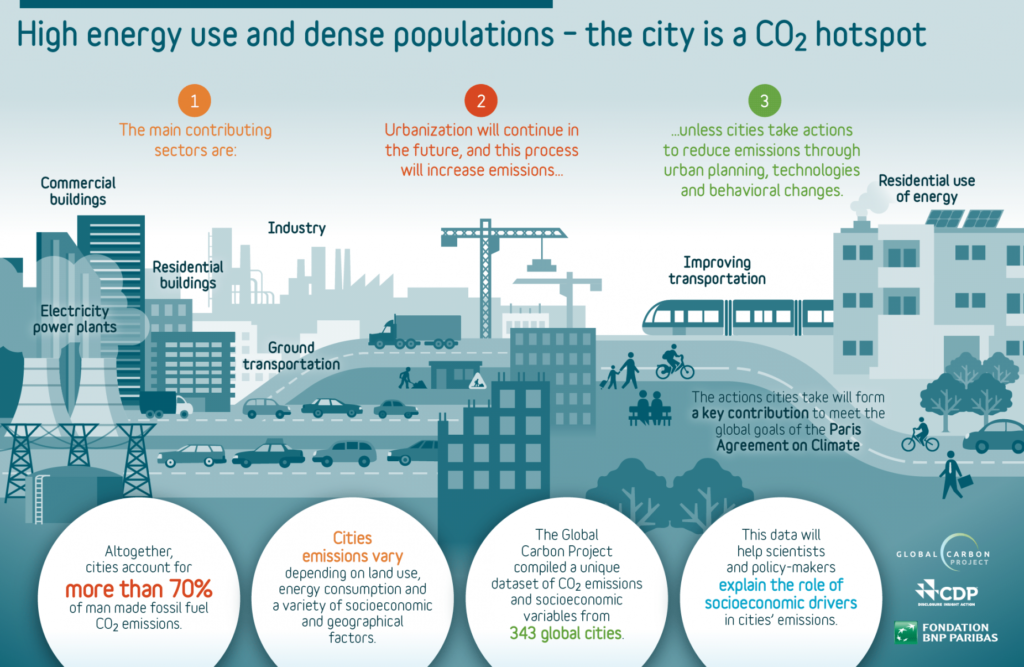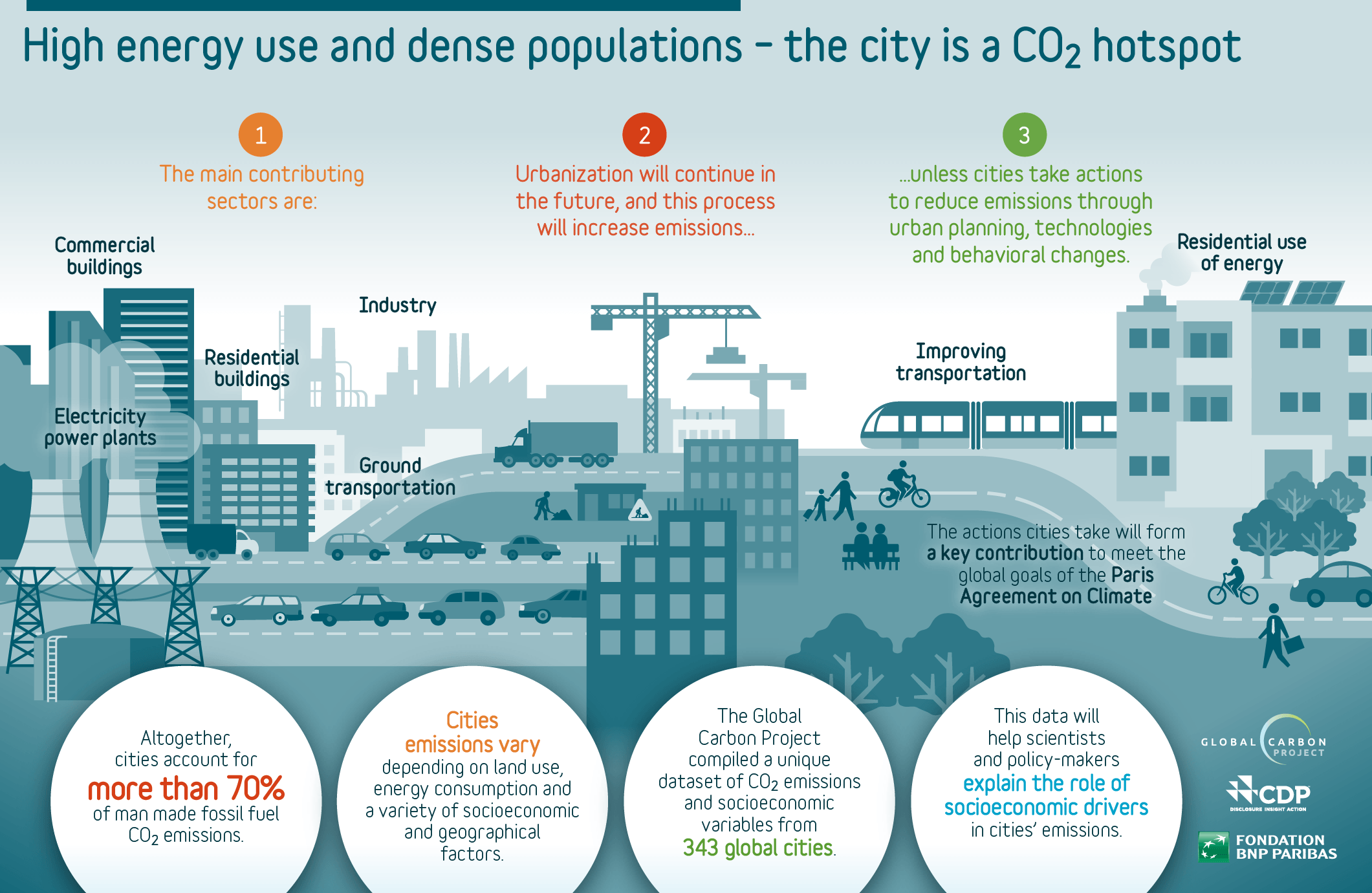A new global dataset of CO₂ emissions for 343 cities has been compiled by Global Carbon Project scientists in collaboration with international organizations leading global community efforts for collecting emission inventory data. The Carbon Disclosure Project (CDP) provided emission data for 187 global cities (few in developing countries), the Bonn Center for Local Climate Action and Reporting (Carbonn) supplied data for 73 global cities (mainly in developing countries), and a set of 83 Chinese cities were compiled by Peking University. The majority (88%) of these cities reported emissions between 2010–2015.
This comprehensive effort to collect data from a larger set of cities was pursued to allow policy makers and the research community to potentially understand the drivers of city emissions and provide strategies to reduce those emissions. This further provides a data with quality check and a comparable dataset.

Importance:
Cities worldwide concentrate population, energy use and economic output. Cities are thus hotspots of the global carbon cycle, with considerable fossil fuel CO₂ emissions from electricity consumption, ground transportation, residential and commercial buildings. Further, in many regions, industrial activities have developed around and within cities that contribute CO₂ emissions as well. Global urban energy related CO₂ emissions range from 8.8 to14.3 Gt CO₂ per year, which is between 53% and 87% of the CO₂ emissions from global final energy use.
An increasing fraction of the global population is becoming urban, and this urbanization trend, particularly pronounced in developing nations, will contribute to the trend of increasing CO₂ emissions in the coming decades.
Cities offer unique opportunities to reduce fossil fuel use through managing energy and materials across homes, businesses, infrastructure and industries co-located in urban areas. Planning, technologies and behavioral changes are key for mitigation in cities. Thus, global cities are key areas to focus on for reducing global CO₂ emissions in meeting the goals of the Paris Agreement on Climate.
Features of city emissions:
CO₂ emissions differ among cities even within the same country, and these differences rely on socioeconomic factors, such as access to energy, urban forms, and climate conditions driving heating in winter and electricity consumption for air conditioning in summer. Data connecting urban CO₂ emissions and their drivers is an important focus of the Global Carbon Project
WEO 2008, Dhakal 2010, Grubler et al. 2012, Seto et al. 2014, Creutzig et al. 2016, IEA 2016, Chen 2017
City emission dataset:
The dataset contains Scope-1 emissions in each city, which includes transport, industrial, waste and local power plants emissions within the city boundary. Scope-2 emissions (when available) includes grid-supplied energy used by cities and produced by power plants outside the city boundary.
A set of ancillary data that potentially have a direct or indirect impact on CO₂ emissions was collected from other datasets (e.g. socio-economic and traffic indices) or calculated (climate indices, urban area expansion), then combined with the emission data.
Uncertainties:
Quantifying uncertainties in the city emission dataset is not quite feasible due to unknown uncertainties originating from self-reported data based on different inventory methods and following different protocols. Full traceability of the original data used in each city emission inventory is often not possible, and city-level CO₂ emissions and driver-related data are not always consistent across space and time. Further, the scope of gases and sectors covered by the datasets are often uneven and not always disclosed, and activity data could have been scaled down from national data when local activity data are unavailable.
The Technical Validation section in Nangini et al. includes analyses to support the technical quality of the dataset.
Future work:
The Global Carbon Project team will further develop more comprehensive city emissions datasets from under-represented geographical regions, such as South-East Asia, Northern America, Africa, Northern Eurasia, the Middle East, Australia and Oceania.




